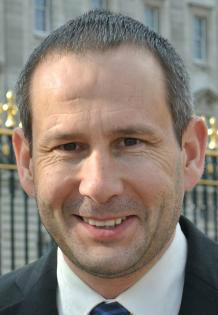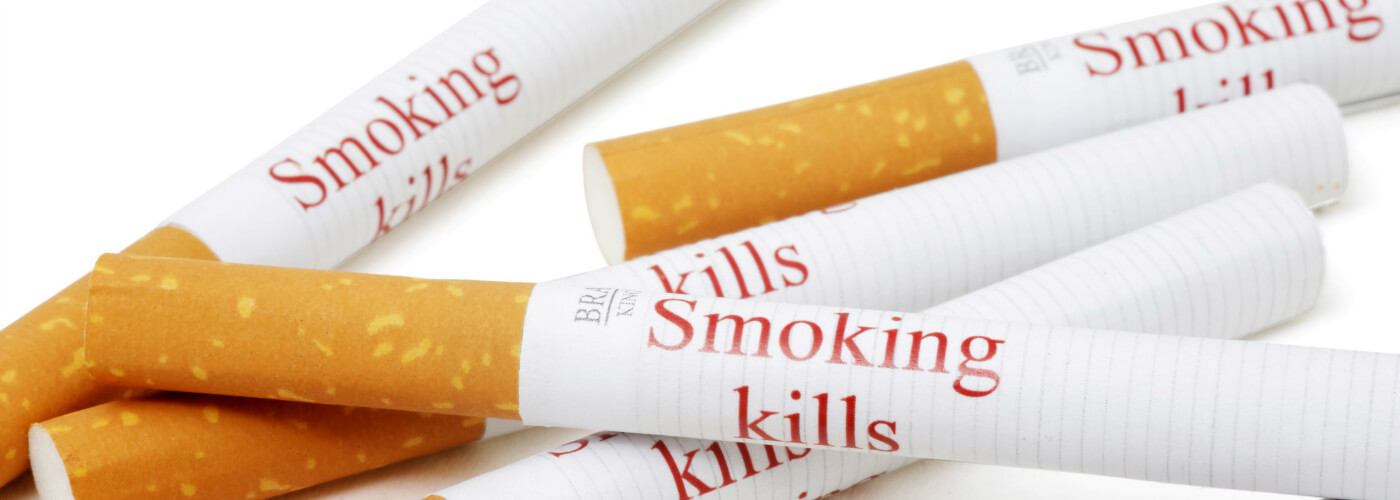Young people are three times less likely to try cigarettes branded with ‘Smoking kills’ than the plain product, to new research.
The study by the University of Stirling and Cancer Research UK examined innovative ways to reinforce health messages around smoking.
The team, led by Dr Crawford Moodie, of Stirling’s Institute for Social Marketing, surveyed 1,000 16-24 years olds from across the UK, to gauge their opinion on different cigarette designs.

Professor Crawford Moodie led the study into the impact of cigarette design.
The research found that young people were three times less likely to try cigarettes individually marked with a health warning, compared to standard sticks. It also found that green cigarettes were less tempting than the standard product.
Smoking tobacco is the biggest preventable cause of cancer in the UK and the leading cause of preventable death. One in every six 16-24 year olds in Britain smokes, with that proportion rising to a fifth in Scotland.
Dr Moodie said: “The study shows how cigarettes can be an important communication tool and that altering their appearance, with a health warning or an unappealing colour, can make them less desirable.
“Young people who start smoking are likely to continue to do so into adulthood, so anything that may deter smoking among this group could help to tackle the potential health repercussions in later life.”
George Butterworth, Cancer Research UK’s senior policy manager, said: “Too many young people are still taking up smoking in the UK. Government anti-smoking campaigns and tax rises on cigarettes remain the most effective methods to stop young people starting.
“We need to continue to explore innovative ways to turn young people off cigarettes to ensure that youth smoking rates continue to drop. This study shows that tactics like making the cigarettes themselves unappealing could be an effective way of doing this.”
Obesity
Meanwhile, the University of Stirling’s Professor Linda Bauld has responded to new figures from ISD Scotland which reveal that almost a quarter (22.9%) of primary one children were at risk of being overweight or obese in the 2016/17 school year.
Professor Bauld, Cancer Research UK’s cancer prevention expert, said: “It’s scandalous we’re living in a country where so many very young children are becoming overweight and obese. A great deal more must be done urgently to reverse this trend and protect our children from a lifetime of ill-health.
“It couldn’t be clearer why Scotland needs a trailblazing obesity strategy which includes legislation to restrict multi-buy offers on unhealthy food and drink. This will encourage parents to opt for healthier choices during the weekly shop.
“We know it’s normal for children in Scotland to consume chocolate, fizzy drinks and crisps every day, and tempting supermarket bulk-buy deals on junk food are at the heart of this poor diet.
“An obese child is five times more likely to be an obese adult. Obesity is also linked to 13 types of cancer. We owe it to our children to protect their health as well as stopping obesity from burdening both society and the NHS.”
Background information
Media enquiries to Greg Christison, Communications Officer, on 01786 466 687 or greg.christison@stir.ac.uk

